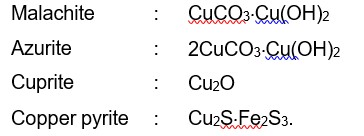On balancing the given redox reaction, aCr₂O₇²⁻(aq) + bSO₃²⁻(aq) + cH⁺(aq) → 2aCr³⁺(aq) + bSO₄²⁻(aq) + c/2H₂O(l) the coefficients a, b and c are found to be, respectively:
On balancing the given redox reaction, aCr₂O₇²⁻(aq) + bSO₃²⁻(aq) + cH⁺(aq) → 2aCr³⁺(aq) + bSO₄²⁻(aq) + c/2H₂O(l) the coefficients a, b and c are found to be, respectively:
Option 1 -
8,1,3
Option 2 -
1,3,8
Option 3 -
3,8,1
Option 4 -
1,8,3
-
1 Answer
-
Correct Option - 2
Detailed Solution:Reduction half reaction.
Cr? O? ²? + 14H? + 6e? → 2Cr? ³ + 7H? O
Oxidation half reaction
SO? ²? + H? O → SO? ²? + 2e? ] × 3
Oxygen is balanced by adding water and hydrogen is balanced by adding H? and the charge is balanced by electrons.
Add ( eq. (i) + (3 × eq. (ii) )
Cr? O? ²? + 3SO? ²? + 8H? → 2Cr? ³ + 3SO? ²? + 4H? O
a = 1 b = 3 c = 8
Similar Questions for you
Na+ C + N + S ®NaSCN
Fe3+ + SCN–
In the metallurgy of aluminium, purified Al2O3 is mixed with Na3AIF6 or CaF2 which lowers the melting point of the mixture and brings conductivity.
Ellingham diagram explains the feasibility of reduction process not the kinetics of process.
Malachite : CuCO3.Cu (OH)2
Azurite : 2CuCO3.Cu (OH)2
Cuprite : Cu2O
Copper pyrite : Cu2S.Fe2S3.
Taking an Exam? Selecting a College?
Get authentic answers from experts, students and alumni that you won't find anywhere else
Sign Up on ShikshaOn Shiksha, get access to
- 65k Colleges
- 1.2k Exams
- 679k Reviews
- 1800k Answers


